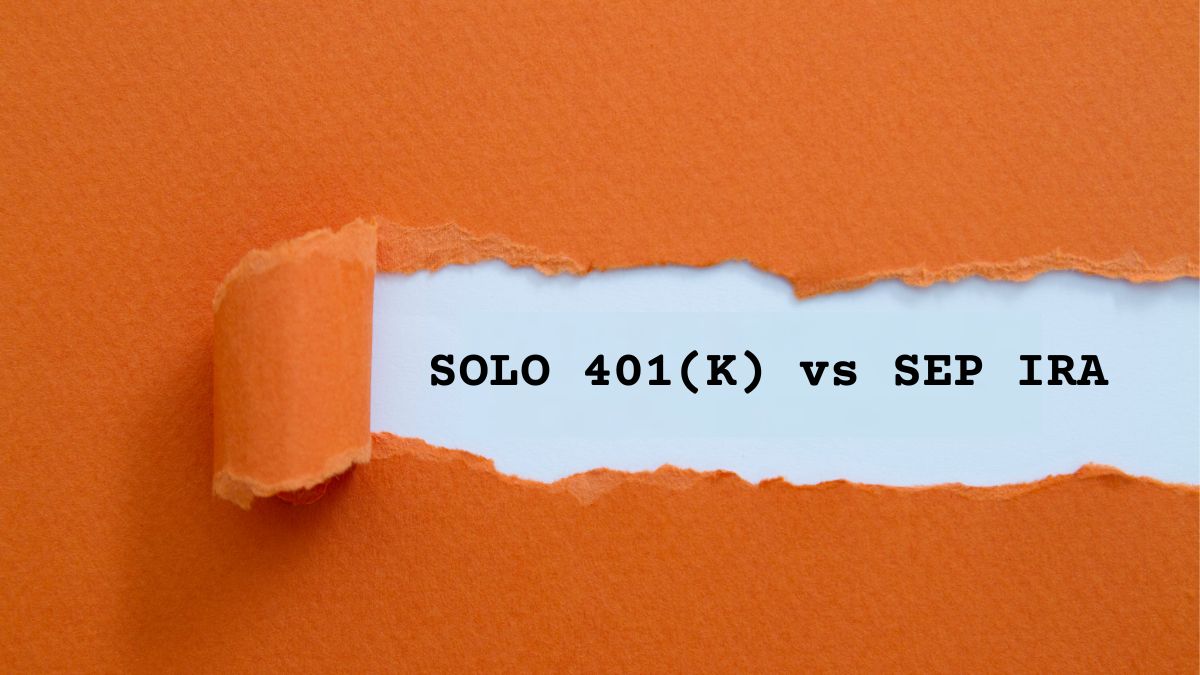Save Money
Solo 401(k) vs SEP IRA: What’s the Difference?

Are you self-employed or run a small business with no employees? Then you can save for retirement in a tax-smart way. There are two popular options: the Solo 401(k) and the SEP IRA.
Both can offer powerful tax benefits, but they have key differences, so let’s go over Solo 401(k) vs SEP IRA for small businesses, and see which one can work best for you!
What’s a Solo 401(k)?
A Solo 401(k), also known as the individual 401(k) or self-employed 401(k), is designed for self-employed folks or business owners with no employees (except for a spouse).
The perks:
- You can contribute in 2 roles: as the employee and the employer
- This potentially lets you contribute more than most other types of plans
- You can choose Roth (after-tax) or traditional (pre-tax) contributions
- There are optional loan features in some plans
What’s a SEP IRA?
A SEP IRA (Simplified Employee Pension) is easier to set up and great for freelancers or small business owners who want low maintenance and flexible contributions.
The perks:
- Contributions are employer-only
- Easy to open at most brokerages, often with no annual paperwork
- You don’t have to contribute every year, making it flexible
Contribution Limits for 2025
Here are some Solo 401(k) vs SEP IRA comparison charts to show key differences:
| Plan Type | Contribution Type | 2025 Limit |
| Solo 401(k) | Employee + Employer | Up to $70,000 total if under age 50 (Employee: $23,500 + Employer: up to 25% of net income) |
| SEP IRA | Employer only | Up to 25% of compensation, max $69,000 |
Catch-up contributions?
Only the Solo 401(k) allows catch-up contributions if you’re age 50+, which is an extra $7,500 in 2025.
Flexibility & Setup
| Feature | Solo 401(k) | SEP IRA |
| Annual Filing Required? | Yes, if assets are more than $250K (Form 5500-EZ) | No |
| Roth Option | Yes | No |
| Loans Allowed? | Yes, if the plan allows | No |
| Admin Complexity | Moderate | Very simple |
Which One Should You Choose?
If you have any employees besides your spouse, then you can’t do a Solo 401(k). A SEP IRA requires equal percentage contributions for all eligible employees, which can become expensive.
| Scenario | Best Option |
| You want to max out your contribution and have no employees | Solo 401(k) |
| You want Roth contributions and/or the option to take loans | Solo 401(k) |
| You want the easiest setup with low maintenance | SEP IRA |
| You’re not sure if you’ll contribute every year | SEP IRA |
| You’re 50+ and want catch-up options | Solo 401(k) |
How to Open a Solo 401(k) or SEP IRA
Here’s how to open either a Solo 401(k) or SEP IRA once you’ve made a choice.
1. Choose your provider
You can open either account with major brokerages such as Fidelity, Vanguard, Charles Schwab, or E*TRADE. I have my Solo 401(k) at Fidelity. Some will also offer the Roth Solo 401(k) option if you prefer to pay taxes now to get tax-free withdrawals later. Since SEP IRAs are simpler, almost every brokerage will have them.
2. Confirm eligibility
For a Solo 401(k), you must have self-employment income and no full-time employees other than your spouse. For example, I have both a full-time W-2 job and a freelance gig, so I opened a Solo 401(k). If you want both a regular employer-sponsored 401(k) and a Solo 401(k), just know that your employee contributions across both plans will be capped at the annual limit, which is $23,500 for 2025. The employer contributions are counted separately because you have two employers: yourself and your actual employer.
SEP IRA requires self-employment income but allows employees, though contributions must be equal percentage for all eligible employees.
3. Fill out the setup forms
Most brokerages let you apply online. For a Solo 401(k), there are a few extra plan documents to sign because it’s considered a “plan,” not just an account. SEP IRAs are shorter and easier to set up.
4. Connect your banking
Contributions have to come from business income, not personal savings, so you’ll typically fund the account from a sole proprietor bank account or your business checking account.
If you don’t have a business checking account (I don’t), just make sure to keep track of the amounts from your side business vs. your W-2 job if that applies.
5. Make contributions
Solo 401(k): You can contribute as both employee and employer, which allows for higher potential contributions.
SEP IRA: Contributions are employer-only, based on a percentage of your net business income.
6. Keep track of deadlines
A Solo 401(k) needs to be set up by December 31 to make contributions for that year, and a SEP IRA can be set up and funded up to your tax filing deadline, including extensions.
The Money Move
Both the Solo 401(k) and SEP IRA for small businesses offer great ways to build retirement savings while lowering your tax bill at the same time. Your decision may come down to how much you want to contribute, whether you prefer a Roth option, and how much simplicity is important to you.
If you’re still not sure which one is right for you, then talking to a financial advisor or tax pro can help guide you further. Either plan is a win, as saving for your future is always a smart money move!
Read more:
Don’t Leave Your HSA Behind at An Old Job
Don’t Leave Your Old 401(k) Behind! Here’s Why (and How to Fix It)

